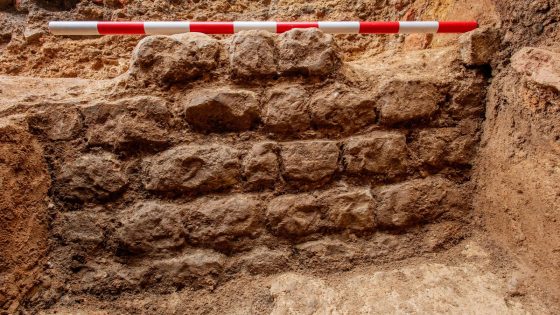Archaeologists have uncovered what is believed to be London’s first Roman basilica during excavations for an office development in central London. The discovery, made on February 14, 2025, reveals significant insights into the governance and cultural integration of the province of Britannia within the Roman Empire.
- Discovery reveals heart of Roman London
- Basilica shows Britannia's integration into Empire
- Romans applied familiar governance methods in Britannia
- Excavation uncovered intact Roman building remains
- Artifacts include pottery and stamped roof tile
- Fingerprints connect to early city origins
The basilica, dating back 2,000 years, was located beneath a concrete floor after Hertshten Properties initiated a new investigation with the Museum of London Archaeology (MOLA). Previous investigations had suggested the site’s historical significance, but the extent of the remains was unknown until now. Archaeologists found large sections of the basilica, including walls measuring 32 feet long and 13 feet deep, constructed from flint and limestone sourced from Kent.
Among the artifacts discovered were fragments of Roman pottery, bricks, and tiles. Notably, one roof tile bore the name ‘London’ and showed the fingerprints of the Roman tile maker, providing a tangible connection to the city’s early history. This discovery underscores how the Romans implemented their governance methods in Britannia, as noted by experts in ancient history.
Hannah Platts, a lecturer at the University of London, emphasized the significance of the basilica’s discovery, stating it reveals the integration of Britannia into the broader Roman Empire. This finding demonstrates that the Romans quickly established similar governing practices in their provinces as they did elsewhere in the empire.
The discovery of the Roman basilica in London not only enriches the understanding of the city’s ancient history but also illustrates the broader narrative of Roman influence across its provinces. As excavations continue, further insights into the daily life and governance of Roman London are anticipated.































